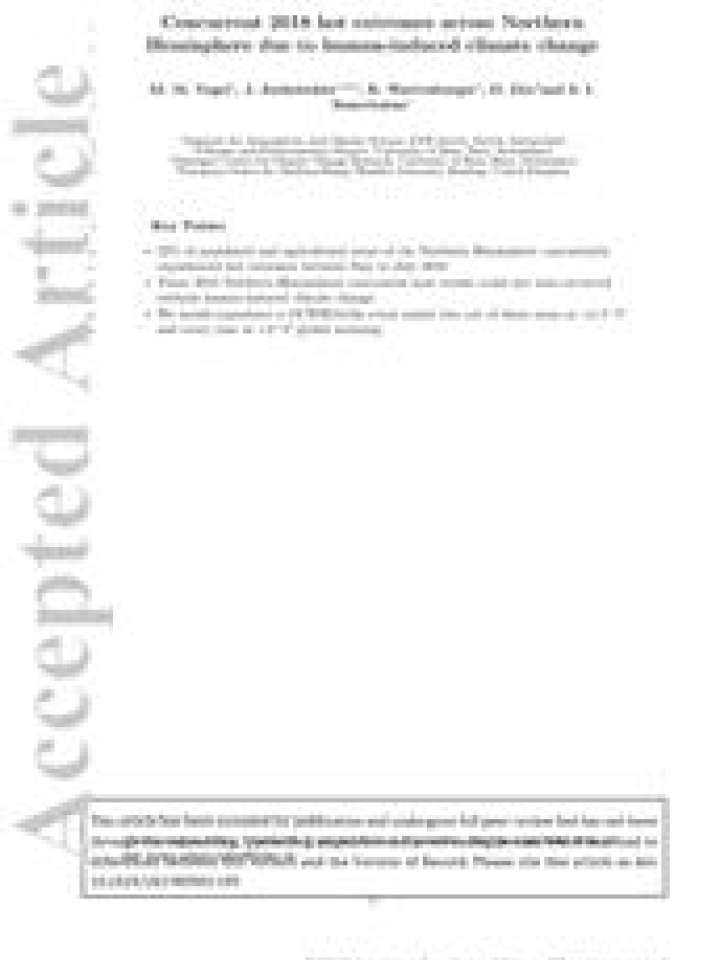Concurrent 2018 hot extremes across Northern Hemisphere due to human‐induced climate change
Extremely high temperatures pose an immediate threat to humans and ecosystems. In recent years, many regions on land and in the ocean experienced heatwaves with devastating impacts that would have been highly unlikely without human‐induced climate change. Impacts are particularly severe when heatwaves occur in regions with high exposure of people or crops. The recent 2018 spring‐to‐summer season was characterized by several major heat and dry extremes. On daily average between May and July 2018 about 22% of the populated and agricultural areas north of 30 degrees latitude experienced concurrent hot temperature extremes.
Events of this type were unprecedented prior to 2010, while similar conditions were experienced in the 2010 and 2012 boreal summers. Earth System Model (ESM) simulations of present‐day climate, that is, at around +1°C global warming, also display an increase of concurrent heat extremes. Based on ESM simulations, the authors show that it is virtually certain (using IPCC calibrated uncertainty language) that the 2018 North‐Hemispheric concurrent heat events would not have occurred without human‐induced climate change. The report further reveals that the average high‐exposure area projected to experience concurrent warm and hot spells in the Northern Hemisphere increases by about 16% per additional +1°C of global warming. A strong reduction in fossil fuel emissions is paramount to reduce the risks of unprecedented global‐scale heatwave impacts.
Explore further
